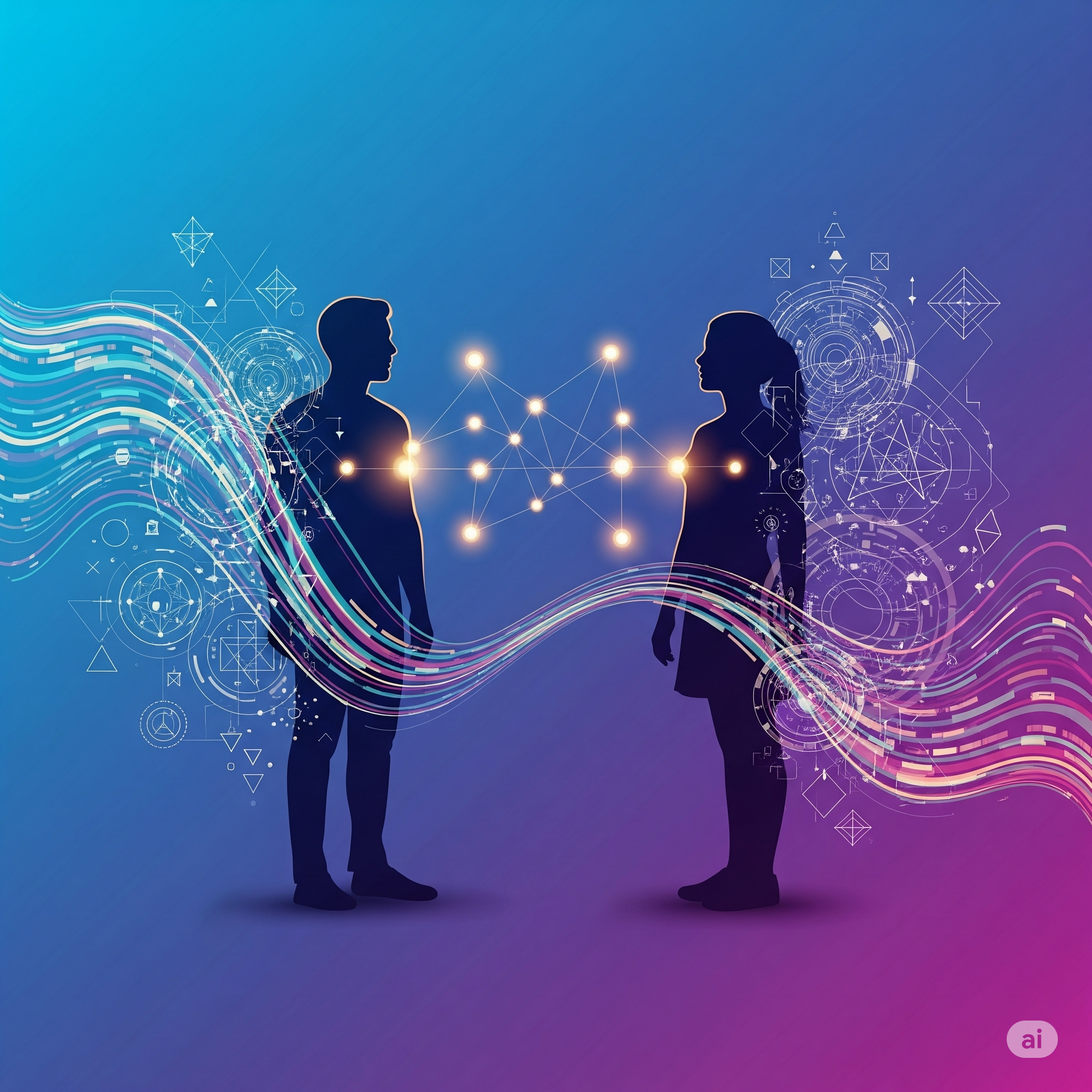Swipe Minds, Not Faces
How Vector Embeddings Could Redefine Human Connection

1. The Limits of Your Social Graph
Almost every social platform today still assumes that your next friend or match is someone you’ve met, someone you live near, or someone you went to school or work with. Friend suggestions come from mutual friends. Match suggestions come from your city. The whole system is a digital replica of your real-world proximity.
And yet, most of us now spend our digital lives immersed in content made by strangers — creators from different countries, people with wildly different life experiences, voices from corners of the internet we’ve never physically visited. We laugh at the same memes as someone across the world. We binge the same obscure niche videos. But we never get introduced.
This is the mismatch: we live globally, but connect socially like it’s still 2005.
2. The Rise of the Vector Self
Behind the scenes, platforms like YouTube, TikTok, Instagram, and Spotify aren’t just guessing what you like. They build detailed, high-dimensional vector embeddings to represent you.
Every click, watch, like, skip, and rewatch becomes input for machine learning models that encode your behavior into a vector — a list of numbers, often hundreds of dimensions long, capturing your interests and preferences.
The same goes for content: videos, reels, songs, and posts are also embedded. The closer your user vector is to a piece of content’s vector, the more likely it is to appear in your feed. That’s how recommendation engines work.
But here’s the kicker: these vectors don’t just represent what you like — they represent how you experience the world.
If two people have similar vectors, they’re not just watching the same video — they’re laughing at the same beat, staying for the same reasons, skipping at the same moments. That’s deep alignment.
3. How Dating Apps Use It — But With a Label
Dating apps also use embeddings — they just apply them differently.
Your profile photo, bio, and behavior are all encoded into vectors. The system finds people who are behaviorally or semantically close and shows you those profiles.
But the interaction is loaded from the start: this is a date. A romantic implication. Pressure. Evaluation.
So instead of curiosity, we often approach these matches defensively. We look for red flags. We scrutinize minor differences. We forget that closeness in taste, humor, or behavior could be a better foundation than shared height, job, or star sign.
There’s another issue too: dating apps rarely use your natural, passive signals. Instead, they make you fill out long questionnaires or prompts. And when answering, we often don’t respond as our true selves — we try to present a likable version of ourselves. We optimize for appeal, not authenticity. This distorts the data and further erodes the value of any algorithmic match.
4. How Social Platforms Use It — But Without People
Social platforms do the opposite. They use embeddings to recommend content, not people.
TikTok might know that you and someone in Germany have 90% overlap in viewing behavior, but you’ll never know they exist. You’ll both be served the same next video, but never cross paths.
There’s no mechanism to surface the people who feel like you. You orbit in the same cultural space — alone.
So dating apps use vector closeness, but distort it with romantic framing. Social platforms discover vector closeness, but throw it away.
5. A New Model: Connection by Closeness, Not Labels
What if we had a system that simply said:
“You and this person are close in how you experience the world. That’s all.”
No labels. No expectations. Just a quiet signal that says: you two might click.
Maybe it introduces you both in a shared space — a group watch, a chat window during a live stream, a reaction bubble on a trending reel.
Maybe you both get the option to send a message — or just react to something together.
Connection, not matching. Discovery, not pressure.
6. Why This Is Hard — And Still Worth Doing
Of course, this isn’t easy to build.
Platforms like YouTube and TikTok have billions of user interactions and deeply trained embeddings. A new app starts from nothing. Cold start. Sparse signals. No vector density.
But that’s not a reason to dismiss the idea. It’s a reason to build it differently:
- Pull signals from existing platforms (Spotify playlists, YouTube likes, Reddit history)
- Start with high-signal verticals (e.g., sci-fi fans, language learners, long-form podcast nerds)
- Focus on temporary shared experiences instead of permanent relationships
You don’t need to be TikTok. You just need to be a window — a way to meet someone nearby in thought.
7. Is There a Market for This?
There are people — many people — who would love to connect outside the rigid structures of dating, friendship, or networking.
They’re the ones who DM strangers on Reddit.
Who make Discord friends through shared hobbies.
Who leave long YouTube comments because they want to start a conversation.
They don’t want commitment. They want connection.
They don’t need a label. They need a vibe.
This isn’t about making friends or finding dates. It’s about meeting people the algorithm already knows you’re similar to, but never introduces you to.
8. Confession of a Lazy Inventor
I’ll be honest: I’m probably not going to build this. I’m lazy. I overthink. I come up with ideas and let them float away.
But this one feels worth writing down. Because maybe someone else out there is thinking the same thing.
Maybe you’ve been waiting to meet people like you, without needing to call it friendship, dating, or networking.
Maybe we all have more in common with strangers than we realize — and we just need the algorithm to let us know.